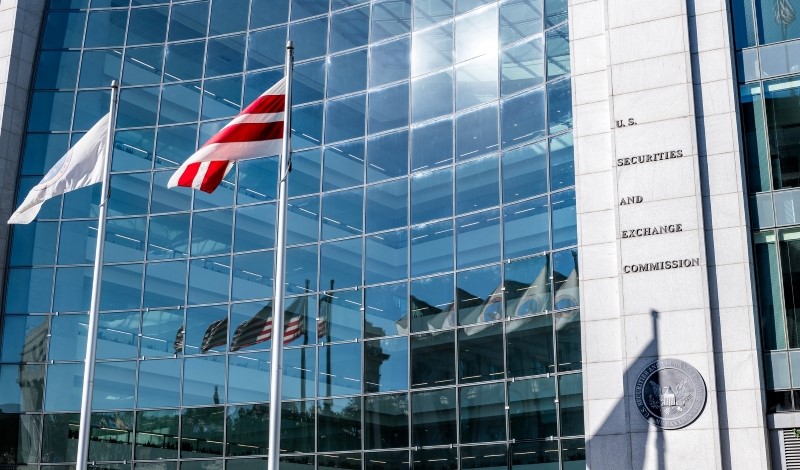
Scholar claims that the SEC’s 2022 whistleblower report to Congress was the least transparent in history.
The head of the U.S. Securities and Exchange Commission (SEC), Gary Gensler, has led the SEC on a “transparency rampage,” according to Alexander I. Platt of the University of Kansas School of Law. But Platt argues that, despite Gensler’s public pushes to increase transparency by regulated entities, the SEC’s 2022 annual report to Congress on its whistleblower program was anything but transparent.
During his three-year tenure at the SEC, Gensler has proposed far-reaching disclosure requirements for public companies, private funds, and activist investors. Yet according to Platt, the SEC whistleblower office’s 2022 report to Congress so greatly lacked transparency that it undermines public trust in the office altogether.
Congress created the SEC’s whistleblower program in 2010 to encourage individuals to report possible violations of federal securities laws. The program allows whistleblowers to remain anonymous throughout the process and guarantees them financial compensation if their tips lead to the discovery of wrongdoing.
Under the law establishing the whistleblower office, the SEC must present an annual report to Congress containing key metrics, such as the number and amount of awards granted by the program and audited statements of funds from which whistleblowers are paid. In 2023, for example, the SEC reported awarding of nearly $600 million to 68 individual whistleblowers. These totals, according to the SEC, include one award for over $275 million—which is the “largest in the history of the Program.”
But these yearly reports notably do not contain information which might reveal the whistleblower’s identity. According to Platt, when Congress created the whistleblower office, it “sensibly” instructed the SEC to avoid disclosing such information.
Yet Platt voices concerns that, with its reports to Congress, the SEC may be abusing anonymity protections, using the excuse of whistleblower privacy to avoid publicly disclosing award determinations and other claim-related information. Platt worries that what he sees as a wholesale lack of disclosure, disguised as concern for whistleblower protection, may undermine the efficacy of the entire whistleblower program by precluding public interest checks on the program.
Platt notes, for example, that the SEC is not required to—and does not—include in its reports the total whistleblower program budget, the nature of the alleged misconduct contained in reported tips, or the percentage of whistleblower payouts that cover the administrative costs of the program, such as lawyer’s fees.
But Platt argues that some currently-undisclosed aspects of the program’s operations are actually vital for Congress and the public to know because the program’s whistleblower payouts—over $1.9 billion since inception—would have benefitted taxpayers otherwise.
Platt asserts that the SEC’s lack of transparency not only fails to provide additional protection for whistleblowers, but also obscures vital information about the program that is necessary for evaluating its costs and benefits. Platt also notes that the agency’s lax disclosure has drawn criticism from third parties as well.
But Platt’s concerns about the SEC’s secrecy go deeper. He cites, for example, the SEC’s 2022 annual report, which he claims omitted critical information that the SEC had previously disclosed in “every single prior annual report since the earliest days” of whistleblower office programming. The information omitted includes the proportion of insider versus outsider awardees, the proportion of awardees who reported their concerns up the chain internally before bringing their tips to the SEC, and the number of attorneys employed by the SEC’s whistleblower office, according to Platt. The 2023 report, although not discussed by Platt, also omits such information.
Platt concedes that these omissions may not necessarily indicate any foul play on the part of the agency. He also acknowledges that the omissions may merely stem from resource constraints from the SEC’s shifting of personnel away from report preparation to assisting with rulemaking activities.
But Platt also emphasizes that these omissions might be evidence of something “darker,” such as a general disdain at the SEC for the traditional mechanisms of regulatory processes, as some critics have claimed. In this vein, Platt addresses the possibility that these omissions could be hiding something “controversial or embarrassing,” such as the compensation of whistleblowers who profited from the very scheme they blew the whistle on.
Ultimately, Platt worries that these omissions indicate that the SEC is not taking the transparency of its whistleblower program seriously. And in August 2022, SEC Commissioner Mark Uyeda expressed that very concern, stating that increased scrutiny of the whistleblower program’s transparency was “understandable.”
Although the SEC’s whistleblower program has been touted as a successful method of deterring securities fraud, some critics, including Commissioner Uyeda, maintain that it could be made even more effective by increasing the transparency in these yearly reports.
Platt concludes that the SEC’s whistleblower program’s secrecy threatens to undermine the SEC’s commitments to both openness and accountability—an ironic outcome for a government agency otherwise focused on transparency.



